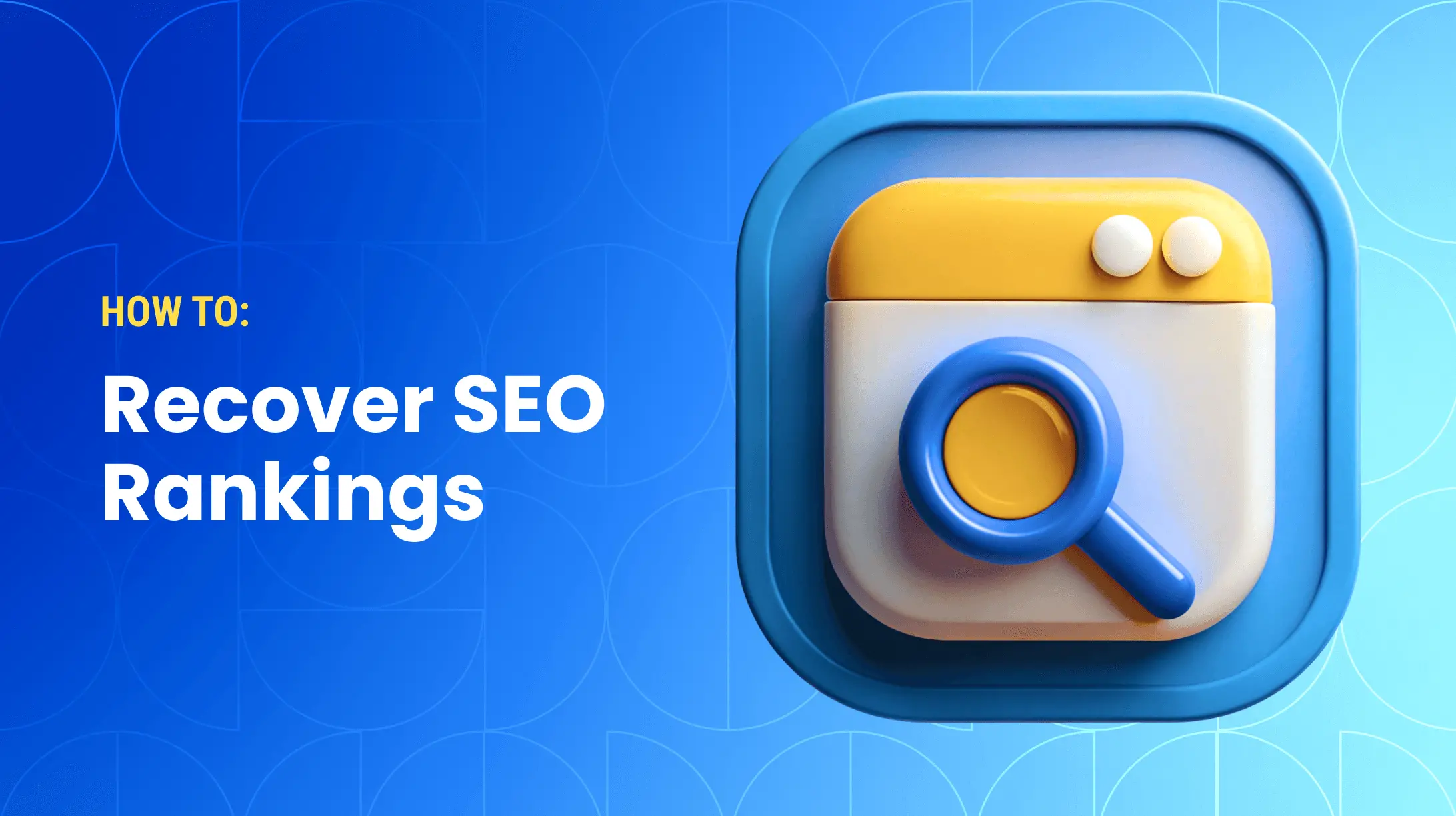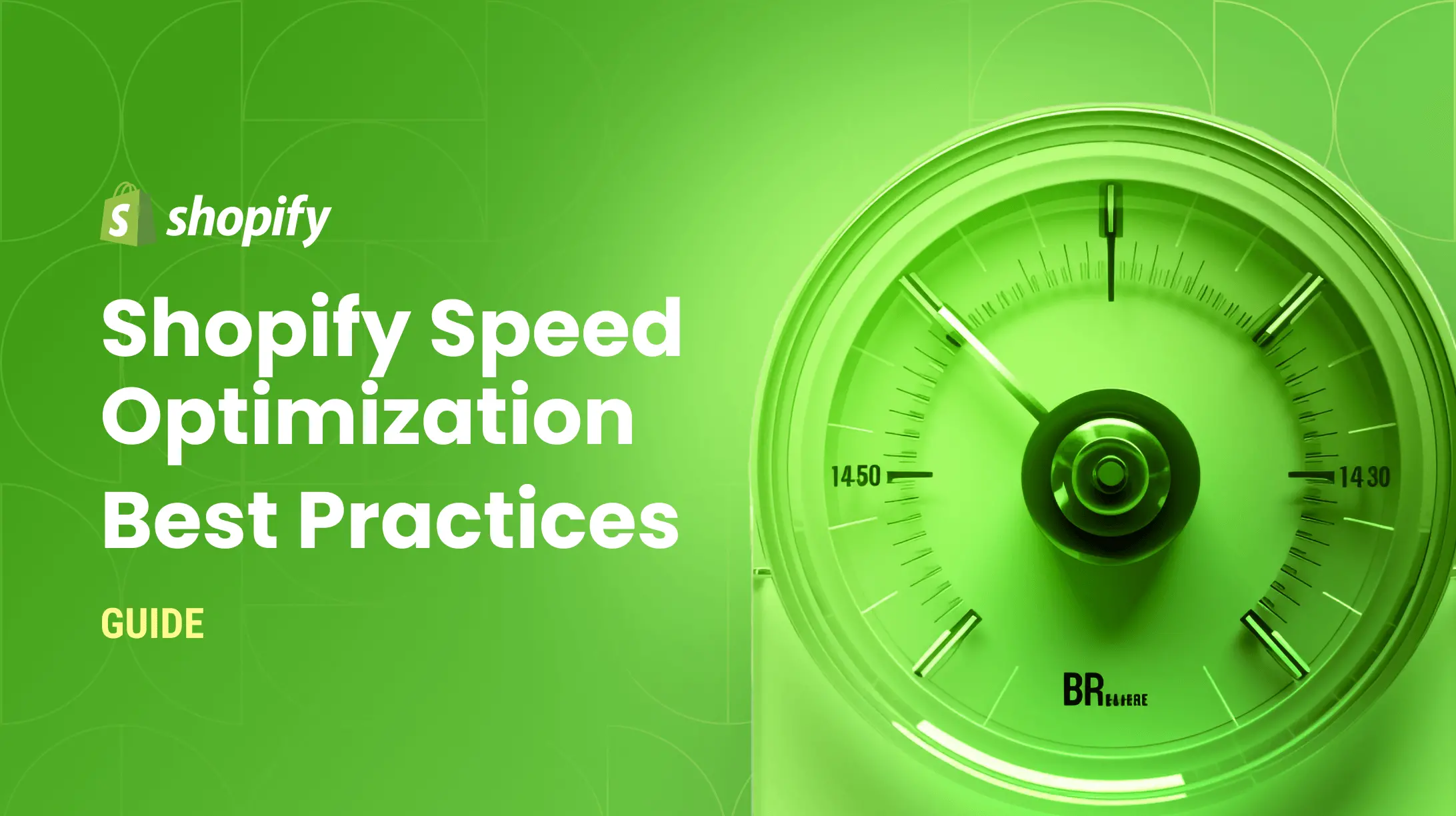0%

When moving to a new Shopify store or simply upgrading your e-commerce platform, you inevitably face the risks of potential SEO setbacks. Changes to your site's structure and content can result in ranking shifts at any time, yet site migration SEO concerns are especially significant. These risks include:
- Loss of search engine trust because of incorrectly implemented redirects.
- Poor user experience from broken links or website errors.
- Drop in traffic to previously popular content.
In this article, we offer a strategic SEO migration checklist designed to preserve your SEO rankings during and after a Shopify migration. Read on to create a structured approach in your head and learn the vital steps to protect your online store’s visibility throughout the transition process.
Drafting a Shopify Migration Plan
An effective SEO migration plan begins with a comprehensive SEO audit of your existing website. This initial step involves:
- Identifying top-performing pages to secure website traffic and engagement.
- Analyzing existing keyword rankings to pinpoint high-value pages that deserve additional attention during migration.
- Assessing the backlink profile to preserve influential links that boost your site authority.
Also, make sure to set SEO benchmarks and KPIs to measure the migration's success. The data you’ll collect at the start allows you to perform an objective comparison of pre- and post-migration performance.
Pre-Migration Backup Strategy
Before embarking on your Shopify migration journey, establishing a robust backup strategy is essential to safeguard your data and maintain business continuity. Here’s why a backup is crucial:
- Data Integrity and Security – A comprehensive backup ensures you have a complete copy of your store's data and content, protecting against data loss during migration. This includes product information, customer data, order history, and theme customizations.
- Seamless Recovery – In the event of unforeseen issues, having a backup allows you to quickly restore your previous setup, minimizing downtime and disruption to your business operations.
- Risk Mitigation – Migration processes can sometimes encounter errors. A pre-migration backup serves as an insurance policy against potential missteps, ensuring you can revert to a stable version if needed.
- Peace of Mind – Knowing your data is safe, you can focus on optimizing the migration process without worry. This helps you maintain confidence in achieving a smooth transition.
Pre-Migration Technical SEO Configurations
Attention to the technical details of your website is crucial for preserving SEO rankings and user experience. Here’s what you should pay attention to during this step:
- Domain Migration SEO Aspects – Try to retain existing URL structures to maintain link equity. For URLs that must change, implement redirects (see below). Prepare to configure the robots.txt file for the new domain.
- Meta Titles and Descriptions Migration – Transfer all meta titles and descriptions accurately to the new domain. SEO metadata is essential for search rankings and CTR.
- Site Hierarchy and Breadcrumbs – Maintain consistency in site hierarchy and breadcrumbs to preserve effective navigation. When migrating, transfer structured data, and submit a new XML sitemap.
- Shopify Themes and Mobile Responsiveness – Choose a Shopify theme that’s responsive, as mobile-friendliness is a significant SEO ranking factor. Test the theme across different devices to ensure compliance.
- Page Load Speed Optimization – Enhance page load speed by optimizing images, leveraging browser caching, and minimizing code. Faster loading times improve user experience and contribute positively to search engine ranking algorithms.
Content Strategy and On-Page SEO
To keep your site's search rankings intact, it’s important to stick to on-page SEO fundamentals during the migration process. The three elements below are key to focus on for a smooth content transition.
Header tags
Employ header tags (H1, H2, H3, etc.) not only to break up text for reader engagement but also to signal content hierarchy to search engines. Make sure these are transferred correctly.
Alt tags for images
Each image should have a clear, descriptive alt tag. This improves accessibility for users with screen readers and provides search engines with context, which is particularly useful for image search optimization.
Internal linking
Maintain a strong internal linking structure to facilitate user navigation and distribute page authority throughout your website. This can enhance user engagement, reduce bounce rates, and support overall site credibility.
Post-Migration Shopify SEO Checklist
Once you’ve migrated to a new Shopify store, make sure to conduct a post-migration SEO audit. This step will let you quickly identify and fix issues, as well as boost your confidence in your new store’s SEO status quo.
404 errors and broken links
Auditing for 404 errors is among the key SEO site migration best practices since, when present, these errors can very negatively impact SEO. A comprehensive review of your website should be performed to identify and fix any broken links, ensuring that users and search engine crawlers can navigate your site without encountering any dead ends.
301 redirect implementation
While you’re working on fixing 404 errors, validate the implementation of 301 redirects from old to new URLs, too. This step is crucial not only for user experience but also for preserving the link equity that your site has built up over time. Redirects signal to search engines that a page has permanently moved and help to retain its ranking power.
Canonical tags
Along with 301 redirects, ensure to update canonical tags. These HTML elements tell search engines which version of a URL you want to appear in search results, preventing duplicate content issues and consolidating page authority.
Indexing
Verify the indexing status of your new Shopify site in search engines. Use tools like Google Search Console to confirm that all your new URLs are being indexed and that none of the old pages are being served in search results.
Keyword ranking monitoring
Closely monitor keyword rankings after migrating to Shopify. Any significant changes in your rankings can be a sign of issues with the migration process. Keep track of how each page ranks for its targeted keywords and compare this data to the benchmarks set before migration to gauge any fluctuations that may need addressing.
Setting up Google Search Console
Google Search Console is an essential tool for monitoring your site's presence in search results. Follow these steps to set it up for your new Shopify store:
-
Add Your Site: Log in to Google Search Console and add your new Shopify store as a property. You can verify ownership using several methods, such as uploading an HTML file or using the Google Analytics tracking code.
-
Submit a Sitemap: Once your site is verified, submit your sitemap to ensure that Google indexes all your new URLs. This helps search engines understand the structure of your site and find new or updated pages faster.
-
Monitor Indexing and Coverage: Regularly check the Coverage report to identify any issues with indexing. Look for any errors or warnings like exclusions or redirect issues that need resolving.
-
Check Performance Reports: Use the Performance tab to track clicks, impressions, and average positions of your pages in search results. This data is invaluable for assessing post-migration ranking changes.
Setting up Google Analytics 4
Google Analytics 4 provides deep insights into user interactions and behavior on your site. Here's how to get started:
-
Create a Google Analytics Account: If you haven't already, create a Google Analytics account. Choose the option to set up a GA4 property.
-
Install Tracking Code: Add the GA4 tracking code to your Shopify store. This is typically done by inserting the code into the theme's header or using a Shopify app that facilitates GA4 integration.
-
Configure Data Streams: Set up data streams to collect data from your website. Make sure you enable enhanced measurement for comprehensive tracking of user interactions.
-
Set Up Conversions: Establish goals and conversion events in GA4 to track key actions you want visitors to complete, such as purchases, form submissions, or sign-ups.
-
Analyze Reports: Use GA4’s Reports section to examine user behavior, demographics, and traffic sources. This helps you understand the effectiveness of your post-migration SEO efforts.
Building Authority Post-Migration
After the technical aspects of the migration are addressed, focus on building the authority of your new digital store. Update backlinks by reaching out to the administrators of external sites that link to yours, informing them of the URL changes to maintain the integrity of these connections.
Continue with a robust content marketing strategy and consistent SEO enhancements. Content is a driving factor in search rankings, and it’s important to keep producing quality material that is relevant to your audience.
Finally, leverage Shopify apps designed for SEO to fine-tune your site's optimization. These tools can provide additional support for keyword optimization, meta tags, and more, helping you maintain and enhance your site's SEO standing.
Wrapping Up
Moving your store to Shopify doesn’t have to mean starting from scratch with Shopify SEO. To keep your site's search rankings intact, it’s essential to stick to specific strategies. Address your website migration SEO concerns by properly auditing your store, making technical and on-page SEO preparation before migration, as well as thoroughly auditing the website after the transition is over. With diligent planning and careful execution, you can let Shopify not simply sustain, but enhance your site's SEO prowess.
FAQs
How should I handle URL changes during migration?
Implement 301 redirects from old URLs to new ones to maintain link equity. Update internal links and submit a sitemap to Google Search Console for smooth crawling.
How can I track Shopify SEO performance after migration?
Use Google Analytics 4 and Google Search Console to monitor organic traffic, keyword rankings, and page load times. Regular audits help identify and resolve issues.
What if my rankings ondrop post-migration?
Ensure all 301 redirects are correct, check for crawl errors, and optimize for speed and mobile. Review content relevance and adjust your SEO strategy as needed.
Expert in ecommerce website development topics. Skilled SEO Specialist with a proven track record of improving website visibility and search engine rankings. Experienced in keyword research, on-page and off-page optimization, link building, and content strategy development. Passionate about staying updated with the latest SEO trends and algorithm changes to ensure optimal online presence.
Experienced SEO Specialist with a proven track record of improving website visibility and search engine rankings. Skilled in keyword research, on-page and off-page optimization, link building, and content strategy development. Passionate about staying updated with the latest SEO trends and algorithm changes to ensure optimal online presence.


